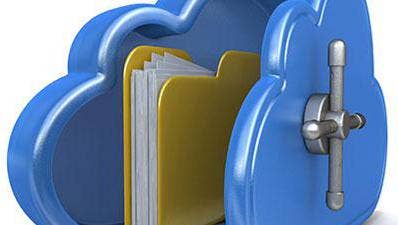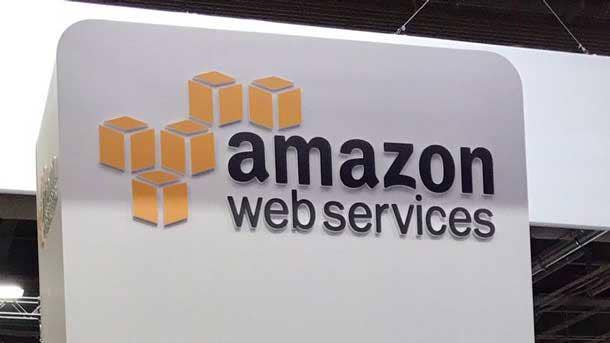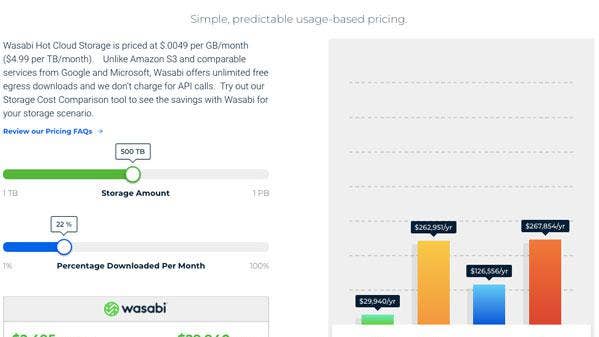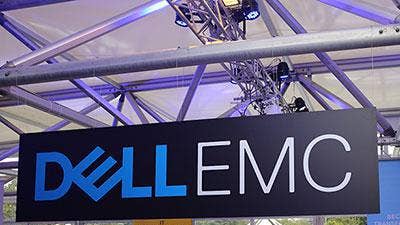Wasabi’s David Friend Slams AWS Data Egress And Dell EMC Storage Costs
“You hear all these horror stories about somebody thinking, ‘OK, I can store a petabyte of data in Amazon for $250,000 a year.’ But what they don’t know is how much they’re going to touch that data. Then they discover that, ‘Geesh, my egress and API charges are bigger than my storage costs,” says David Friend, CEO and president of cloud storage startup Wasabi Technologies.
David Friend On Disrupting The Storage Industry
Former Carbonite CEO David Friend doesn’t hold back his thoughts on public cloud providers like Amazon and Microsoft charging customers exorbitant fees for data egress.
“It insults me when somebody says, ‘Oh, it’s free to put your data in Amazon, but if you want to get it back it’s difficult and expensive,” said Friend, CEO, president and co-founder of cloud storage startup Wasabi Technologies. “Hey, it’s my data. If I want to get it back I should be able to get it back without being ransomed. People hate egress charges and sooner or later people are going to have to get rid of it. … We don’t have egress charges.”
The IT visionary plans to not only disrupt public cloud providers but the entire storage industry itself. “You can store a petabyte of data in Wasabi for less than the annual maintenance on a petabyte of [Dell] EMC storage,” he said. “I don’t know where these guys are going to go in the future.”
Wasabi, who raised $68 million in funding last year, says it provides enterprise class cloud storage for one-fifth the price of cloud vendors and is up to six-times faster with no hidden fee for data egress or API requests. Friend said on average, customers are saving a whopping 80 percent on storage costs when switching to Wasabi.
“You hear all these horror stories about somebody thinking, ‘Okay, I can store a petabyte of data in Amazon for $250,000 a year.’ But what they don’t know is how much they’re going to touch that data. Then they discover that, ‘Geesh, my egress and API charges are bigger than my storage costs,” said Friend.
In an interview with CRN, Friend talks about how Wasabi’s cloud storage disruption strategy, storage costs and the Boston-based startup’s channel future.

We’ve heard from businesses and partners that it’s easy to put your data in the cloud, but difficult and costly to retrieve it. What’s Wasabi’s differentiation?
While we were building Wasabi’s product, I was out talking to customers. The first thing you hear is, ‘I hate egress charges.’ It insults me when somebody says, ‘Oh, it’s free to put your data in Amazon, but if you want to get it back it’s difficult and expensive. Hey it’s my data, if I want to get it back I should be able to get it back without being ransomed. People hate egress charges and sooner or later people are going to have to get rid of it. I found the same thing at Carbonite. When I was starting Carbonite people said, ‘How much is it going to cost me?’’ Everybody in the world was charging by the gigabyte for backup. People didn’t know how many gigabytes they needed to buy to backup their computer. So we said, ‘Let’s offer unlimited backup for a flat price.’ A really simple sales proposition. We’ll lose money on one or two percent of the customers who abuse it because it’s an all-you-can eat buffet, but it made the whole process so simple and easy for everybody that we just blew the competitors off the face of the Earth. Same thing with Wasabi. Everybody says, ‘I hate egress charges.’ We don’t have egress charges. Why are Amazon, Google and Microsoft continuing to charge egress? Because they can get away with it and because they would rather play the old Betamax vs. VHS wars and have these closed environments.

What do you mean by AWS, Microsoft and Google having closed environments? How will you change this?
They say, ‘We want your whole data center in our cloud. Not just your storage and compute -- we want everything. We want your content distribution. We want your analytics, storage and compute. And we’ll keep it all within our own [walls] and we’ll make it really easy for you.’ And that’s good if you’re developing a new app and you need a place to build it, it’s great – you have everything under one roof. The problem is when you have 100 different cloud services, you can’t be best at everything. So what happens is you get a company like Wasabi comes along and says, ‘We’re better at storage than Amazon is.’ You get a company like Packet that comes along and says, ‘We’re better at compute than they are.’ You get a company like Fastly that comes along and says, ‘We’ve got a better CDN [content delivery network] than Amazon has.’ Sooner or later, the customer wakes up saying, ‘If I’m going to build a serious app where I’m going to be spending millions of dollars. I’m going to buy my storage from Wasabi. I’m going to buy my compute from Packet. I’m going to buy my CDN from Fastly. And my MSP and systems integrator is going to help me put it all together so it works.’ Our job is to sit out there and say, ‘Let’s have standards. Let’s agree that everybody is going to allow information to flow back and forth between our companies products with no cost to the user.’

So what are the data egress numbers from public cloud providers?
Roughly speaking for Amazon, it costs two-cents per gigabyte to store the data a month, but it costs you five-cents per gigabyte to take it out. Just to access it. If you have a petabyte of data and your monthly usage is on average 100 percent of my data is going to be accessed once a month, it costs you $20,000 to store the data, but $50,000 to access it. So if you’re downloading 50 percent of your data every month, you’d be paying $20,000 to store it and roughly $30,000 to access it. On average, our customers probably access 10 to 20 percent of their data every month. It’s really easy to increase your storage costs by 50 percent with Amazon on average. Some people are finding it’s a lot more.

What are you finding the average storage savings are when switching from Amazon to Wasabi?
The average savings is typically 80 percent. That would include the difference in the actual storage costs plus the fact that most people access 10 percent to 20 percent of their data every month, plus Amazon has API charges. So every time you touch your data, even within Amazon, you’re going to have all these API operations charges. They charge you micro-pennies for all these things. If you look at a typical Amazon bill, it has 10 to 20 line items on it for all these little things that add up. Our bill has one line item, it’s the storage. A big thing for the user is the predictability of it because almost everybody knows how much data they have to store, but almost nobody knows how often they touch it because it’s not something they’ve ever measured or metered. For example, let’s say you have an EMC box that I paid $500,000 for that’s a one-petabyte box. But nobody measures how often they touch their data or what percentage of data they access. You hear all these horror stories about somebody thinking, ‘OK, I can store a petabyte of data in Amazon for $250,000 a year.’ But what they don’t know, is how much they’re going to touch that data. Then they discover that, ‘Geesh, my egress and API charges are bigger than my storage costs.’ So it’s the unpredictable aspect of it that really gets people. There are horror stories of people thinking that their Amazon bill was going to be ‘X’, then it ends up being ‘2X’ or ‘3X’. There’s all of these things they charge you for that you never really thought about when you were running your own in-house environment.

Are you seeing businesses abandon Amazon for Wasabi?
We don’t get a lot of people who are abandoning Amazon and coming to Wasabi because once you’re in Amazon, you’re stuck. The cost of moving is very high. If you have a petabyte of data in Amazon and you want to egress it over the internet to Wasabi, it’s five-cents a gigabyte. It’s going to cost you $50,000 to take your data out right off the bat. To store a petabyte of data in Wasabi is $73,000 a year. So it’s going to cost you a whole year’s worth of storage just to egress your data out of Amazon.
So where’s the market opportunity for Wasabi?
The big opportunity for us are people who have a room full of EMC servers or NetApp storage devices that are five years old and going out of warranty. Now the customer is saying, ‘The EMC salesman is sitting here with a purchase order of $1 million. Do I really want to replace that gear or is it time to think about the cloud?’ You can store a petabyte of data in Wasabi for less than the annual maintenance on a petabyte of EMC storage. So I don’t know where these guys are going to go in the future. The economics for them just don’t work anymore.

What’s the special sauce in keeping Wasabi’s storage cost so low?
The key to Wasabi right now and our low cost is we make much more efficient use of the disk than anybody else does because we actually get down and write that nasty bits and bytes code. We grab a hold of the heads on the disk drives and put the bits on disks according to algorithms that we’ve developed that are far more efficient than what you could get if your riding on top of Linux or Windows or anything like that. You probably will never meet a software engineer that’s had to worry about the bits that are physically placed on disks. The only engineers I’ve ever met who know how to worry about that have already worked for us. Very few people have any experience doing it. By doing that, we pack more data on the disk. We’re able to use disks in ways other people can’t use them.

What’s the benefits of these algorithms and unique storage engineering?
We’re able to get far more throughput and speed because block file systems like Linux scatter the data all over the disks and the heads are flying all over the place trying to put the files back together. By packing more data on the disk and minimizing head movement, we can take a drive that’s only suppose to last for four years and make it last seven years. That almost cuts the cost of your storage in half relative to someone like Amazon who’s storing their data by using Linux as the operating system to determine where the bits go on the disk. There’s all these tricks we’ve learn over the last 15 years through Carbonite and other things about how to drive down the cost of storage and at the same time improving the speed. It’s very difficult stuff to do.

Explain Wasabi’s business model?
Our business model is to sell storage. We’re like the electric company. We’re the power plant down the street and if you want electricity you can get it in the wall and plug whatever you want into it. That’s the way we work. We’re storage in the cloud. It doesn’t matter whether your storing X-rays, photos, surveillance cameras, or satellite weather data – whatever it is you need to store, it’s just storage. We’re the cloud version of the empty disk drive you buy at Best Buy. You can put whatever you want on it.

So what’s the future for a company like Dell EMC?
I don’t know what the heck is going to happen to [Dell] EMC. Why would anybody want to buy a petabyte of storage from EMC, when you can store a petabyte of data in Wasabi for less than the annual maintenance cost on a petabyte of EMC storage. I just don’t see a future for those guys. You would think if they were smart, they’d say, ‘Well let’s offer a cloud service too. So if somebody wants to store their data on-premise, we’ll sell them a box. If they want to store it in the cloud, we’ll offer that as well.’ But the problem there is that you have a company and sales force whose culture is built around selling boxes and a sales guy putting a big commission check in their pocket. They have cloud storage, they can’t sell it.

Where are storage prices heading?
The biggest component of storage cost is the cost of the disk itself, the actual media. When we put up our first petabyte of storage a year and a half ago, we were buying 4-terabyte drives. Today, we buy 15-terabtye drives that cost the same as the 4-terabyte drive did a few years ago. That’s going to continue. Toshiba just demonstrated a 100-terabye drive, that’s a few years out, but Western Digital and Seagate have promised a 20-terabyte drive within the next 12 months. The cost of the actual storage is going to continue to drop, drop and drop. That will allow us to have the margin in our product to continue to push those savings off to the user. So users can expect to pay less and we’ll always be there pushing that.

Why should channel partners form a partnership with Wasabi?
If you believe in the notion that ten years from now that most data is going to be in the cloud, as an MSP and channel partner – you better figure out how you’re going to make money at that. Otherwise, you’re going to be out of the picture because nobody’s going to want to buy that EMC box or NetApp box anymore. Channel partners need to figure out that in the future, the glass wall with all the blinking lights behind it is no longer attractive as it used to be. It’s economically not something which people are going to want to do because it’s not core to their business. They don’t need the blinking lights anymore because the customer doesn’t care about the blinking lights inside my data center. … So the MSP has got to provide solutions for the customer because they don’t want to have that IT expertise in-house anymore. There’s certain things that are better left to people who do it for a living. That’s why they have to have a new toolkit. And the new toolkit has to include doing all this stuff in the cloud that use to be done on-premises. They can still make money at it, but they have to align themselves with vendors who say, ‘Wasabi is part of the MSP toolkit. If you need to store data as part whatever you’re doing for your customer, it’s a logical solution.’
What does Wasabi’s channel look like right now? Do you have a partner program?
We have no channel program just yet and didn’t have channel discounts up until a week ago. We have 700 channel partners and one-third of our business is coming from the channel. … We’re going to be a mostly channel company. They’ll always will be a few people that will go to the website that will buy stuff direct, but I don’t think that’s going to be a big part of our business five years from now. We’ll be almost entirely going through channels.

How are Wasabi partners making money?
[Partners] have clearly discovered that they can buy Wasabi at our list price, mark it up 100 percent, and still sell it for half of what Amazon cost. Let’s say they’re a Veeam channel partner, they’re going in saying, ‘We’re going to install Veeam and use Wasabi to store all the data in your backups and disaster recovery software.’ The customers know how much cloud storage costs because Amazon, Microsoft and Google have it on their websites. They know the going price for storage is two-cents a gigabyte per month. They can buy storage from us for half-a-cent- per gigabyte per month, mark it up to a penny, and still be half the price of Amazon. Plus, they can make 50 percent margin.

After everything you’ve been through professionally, what keeps you going?
The idea of competing with Amazon, Google and Microsoft is just so cool. I love that whole idea because common wisdom is -- that’s insane. When [Carbonite] entered the backup market, we had EMC, HP and Iron Mountain to compete with and everybody said, ‘Oh they’re going to just crush you guys.’ But big companies have vulnerabilities. Wasabi is really disruptive. Everyday we come into the office, we have more customers than we had yesterday. There’s more people saying, ‘Wow, this is changing the way I’m doing my business.’ Five years from now, we’ll be able to look back on this and say, ‘We were the company that really disrupted the storage business. We really made a mark in the world.’ How much fun is that?